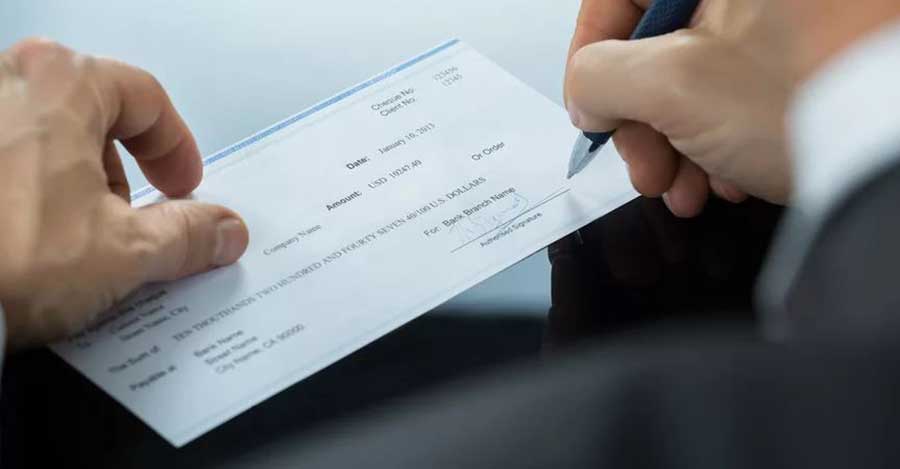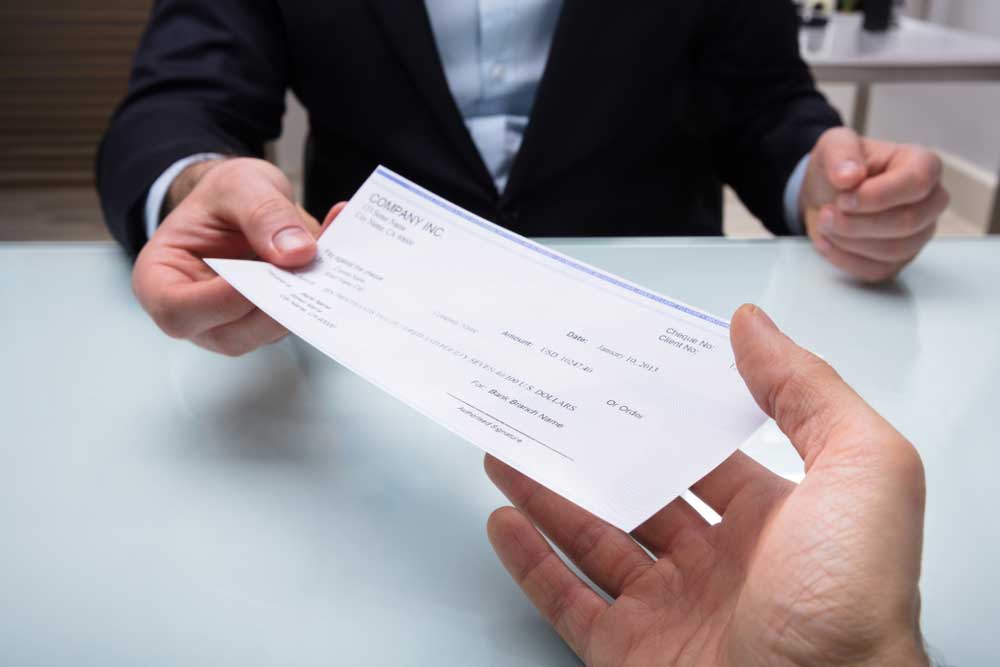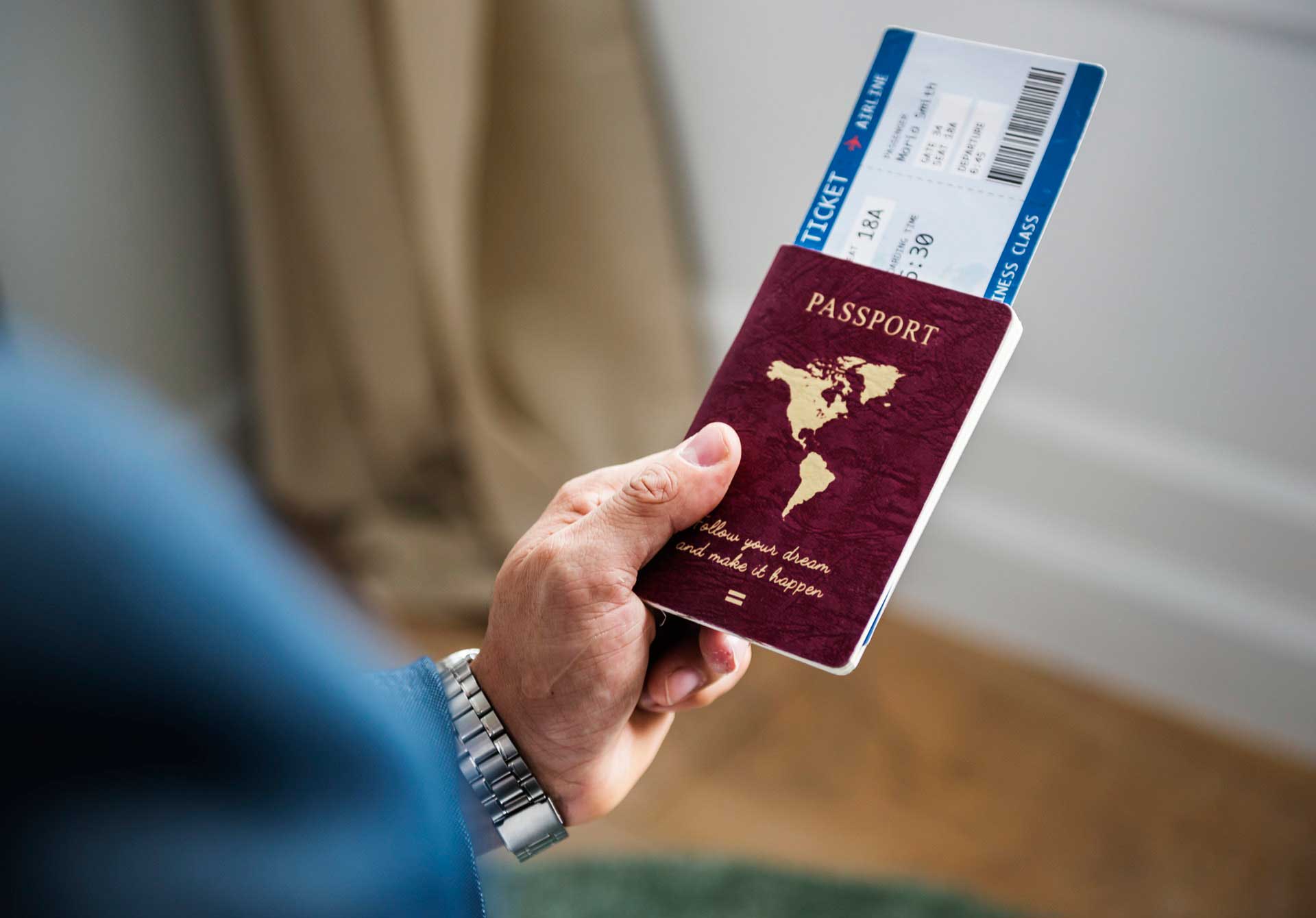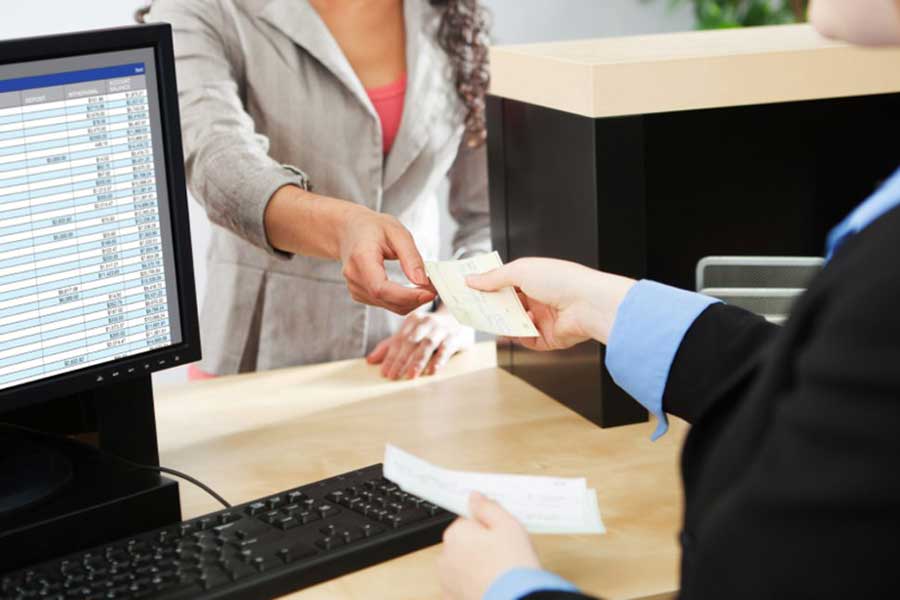
What is a cashiers check and when to use it? A cashier’s check is a form of guaranteed payment that pays the addressee with a bank’s own funds, rather than with money from a personal account. Because cashier’s checks are signed by a bank or credit union employee and backed by the bank itself, they are considered safer than personal checks, which have the possibility of being returned or “bounce” if the issuer doesn’t have enough money to cover the written amount. A cashier’s check is also called an official check.
Cashier’s checks are best for large purchases, such as a car or house sale, when you are likely unable to use a debit or credit card. These checks have extra security features — such as watermarks and sometimes signatures by two bank employees — that make counterfeiting more difficult. So when you purchase one from a bank or credit union, all parties can be confident that the transaction is secure and the risk of theft or fraud is minimal.
What Is a Cashiers Check?
What is a cashiers check? It’s a check guaranteed by a bank, drawn on the bank’s own funds and signed by a cashier. They guarantee the funds because the bank rather than the purchaser pay the amount. The cashier’s check transaction begins when a customer asks a bank for a cashier’s check, and the bank debits the amount from the customer’s account immediately and assumes the responsibility for covering the cashier’s check.
That is in contrast with a personal check, in which the bank does not debit the amount from the customer’s account until the checks are deposited or cashed by the recipient. The bank guarantees that the check will clear and provides security to the recipient who is often selling something. With a personal check, a check will only clear if the funds are available in the check writer’s account when the recipient tries to deposit or cash the check.
A cashier’s check is not the same as a teller’s check, also known as a banker’s draft, which is a check provided to a customer of a bank or gained from a bank for remittance and drawn by the bank, and drawn on another bank or payable through or at a bank. A cashier’s check is also different from a certified check.
A certified check is a personal check written by the customer and drawn on the customer’s account, on which the bank certifies that the signature is genuine and that the customer has sufficient funds in the account to cover the check. Finally, it is not a counter check, which is a non-personalized check provided by the bank for the convenience of a customer in making withdrawals or payments but has no guarantee and is functionally equivalent to a personal check.
The main advantage of know what is a cashiers check is there is zero risk of bouncing a check. Since the bank guarantees the funds, the payment will go through. Also, transactions like real estate settlements take place faster with a cashier’s check rather than with a personal check. The cashier’s check is only by the payee, lowering risk of theft. Disadvantages to cashiers check include the fees that banks and credit unions require. Also, cashier’s checks forged versions are sometimes involved with cases of fraud.
How to Get One?
Now that you know what is a cashiers check is, it is time to get a cashier’s check; the bank will accept cash upfront or withdraw the amount from the payer’s account. Those funds then move to the bank’s own account. The money will then be available when the recipient cashes the check. A cashier’s check differs from personal checks. When you write a personal check, they withdraw the money from your personal account. While you still pay for a cashier’s check, the bank uses their own funds upfront. This makes a cashier’s check a more reliable and secure form of payment.

Order Cashier’s Checks From Your Bank or Credit Union
Request the check: Ask your bank about the requirements to order a check. You’ll either need funds available in your account, or you must bring cash to the bank.
In-Person
You can walk into most brick-and-mortar banks to get a cashier’s check issued. Within a few minutes, the check should be ready, and you can pay the recipient immediately.
Online
Some banks—particularly online banks—allow you to request cashier’s checks online. The bank might only mail checks to your verified mailing address, so you need to wait for the check and then forward it to the ultimate payee.
Be Prepared
Your bank needs several details to issue a check.
Check Amount
You need to tell the bank exactly how much the check is for. They will print this on the check and cannot be changed.
Payee
Provide the name of the payee (the person or business the check should be payable to).
Other Details
You can add a “memo” or notes on the check. For example, you might include an account or reference number.
Identification

If you visit a bank branch in person, bring valid identification (a driver’s license, passport, or other government-issued ID).
Fees
Expect to pay a modest fee for a cashier’s checks. Banks and credit unions typically charge around $8 per check. To cover that cost, you need extra money in cash, or available in your account.
If you are making the payment out of your account, the funds are removed from your account immediately when the check prints. Again, a cashier’s check is a form of guaranteed funds, so your money moves over to the bank’s account until the check gets cashed or deposited.
Credit union members: If you use a credit union, you can often get a cashier’s checks from almost any credit union location (not just your own credit union) with shared branching. Bring ID and information about your “home” credit union. Call ahead to be sure the credit union you plan to visit provides cashier’s checks.If you don’t have a bank account: you can walk into any bank or credit union and ask for a cashier’s check. However, some institutions only issue checks for customers, so you may have to try several locations (or open an account). You could also try a money order instead.
When to Use Them?
Cashier’s checks are among the safest ways to receive payment. Some transactions commonly require them when the seller needs certainty. Cashier’s checks are better for large purchases. For example, spending $5,000 on a used car may prohibit using a personal check or credit card. Avoiding large amounts of cash, the buyer may need another form of guaranteed payment. Here, by knowing what is a cashiers check one would know it to be the better choice.
Another example of a cashier’s checks use would be to cover insurance and brokerage firm payments. Most of those institutions don’t accept money orders as payment for insurance premiums or as deposits into brokerage accounts. Counterfeit money orders and cashier’s checks are used in certain scams to steal from those who sell their goods online on sites such as eBay, Amazon, and Craigslist.

However, there are multiple alternatives to a cashier’s checks. One of these alternatives is a money order, another form of guaranteed payment. They’re usually more readily available since you can purchase them from banks, post offices and other retail stores. You can pay for a money order with cash or a debit card. This prevents them from bouncing with no bank for funds. Just note that money orders have a cap amount of $1000. Cashier’s checks don’t have these limits, making them more useful for larger payments. Depending on the size of your purchase, money orders may be more convenient.
You could also consider certified checks. When making a certified check, the bank guarantees that the payer has enough funds in their personal account to cover the check. The bank freezes the amount until checks are deposited. But unlike a cashier’s check, the bank does not take on the payment itself. The funds draw from the personal account of the payer. The bank is only there to guarantee that the payer can financially make the payment.
Last, you can look into wire transfers. This usually involves sending money from one bank account to another. You can make wire transfers online or at a bank branch if you want to pay in cash. To make the transfer, you must know the recipient’s bank, routing number, and account number. The recipient can access the money almost immediately, making it a good option for long distance payments.
Conclusion – What Is a Cashiers Check?
What is a cashiers check? It’s a form of guaranteed payment that pays with a bank’s own funds, rather than with money from a personal account. Cashier’s checks offer a secure and quick method of payment. They come with almost immediately funds and little risk of checks bouncing. These guarantees make a cashier’s checks the payment method of choice for any large purchases. They can also ease any worries you have about check security and certainty of payment. If you have those concerns, a cashier’s check provides a great option.